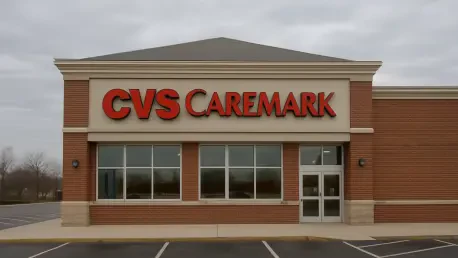I’m thrilled to sit down with James Maitland, a renowned expert in healthcare policy and regulation, with a particular focus on pharmacy benefit management and Medicare fraud. With years of experience analyzing the intersection of healthcare systems and legal accountability, James offers a unique perspective on the recent high-profile case involving CVS Caremark, which was fined nearly $290 million for Medicare fraud. In this conversation, we’ll explore the details of the court ruling, the motivations behind the fraud, the impact on Medicare beneficiaries, and what this means for the future of pharmacy benefit managers under increasing scrutiny.
Can you walk us through the recent court ruling against CVS Caremark and what led to the nearly $290 million penalty?
Absolutely, Lukas. The federal judge in Pennsylvania’s eastern district court, Judge Mitchell Goldberg, ordered CVS Caremark to pay close to $290 million in damages and penalties for overcharging Medicare for prescription drugs. This figure includes $285 million in tripled damages—based on actual damages of about $95 million—and an additional $4.9 million civil fine. The tripling of damages was authorized under the False Claims Act, which allows for such penalties when fraud against the government is proven. The judge determined this amount was justified given the deliberate and financially motivated nature of the fraud.
What sparked this case in the first place, and who brought these issues to light?
The case originated over a decade ago with a whistleblower named Sarah Behnke, who previously served as the head actuary for Medicare Part D at Aetna, a company later acquired by CVS. She accused CVS Caremark of knowingly misrepresenting drug costs at two major pharmacy chains, which led to Medicare prescription drug plans inflating costs and overcharging the government. Her role was pivotal in exposing how these actions ultimately burdened both Medicare and its beneficiaries.
How exactly did CVS Caremark misrepresent drug costs, and who else was involved in this scheme?
According to the case, CVS Caremark manipulated the reported costs of drugs sold at Walgreens and Rite Aid stores. By doing so, they created a hidden profit margin, or what’s referred to as a “spread,” on these transactions. This misrepresentation caused Medicare prescription drug plans to overcharge the government, and as a result, beneficiaries likely faced higher out-of-pocket costs or premiums. It’s a classic example of how distortions in pricing can ripple through the system and harm both taxpayers and patients.
Why did the judge decide to triple the damages, and what did he say about CVS Caremark’s actions?
Judge Goldberg tripled the damages under the False Claims Act because he found the evidence at trial clearly showed the fraud was driven by financial gain, not some innocent mistake. He emphasized that CVS Caremark had multiple opportunities to come clean to the Centers for Medicare & Medicaid Services and other stakeholders but instead chose to conceal the true nature of their pharmacy contracts. The judge felt this intentional deception warranted a strong penalty to reflect the severity of the misconduct.
How did CVS Caremark try to defend themselves against these penalties?
CVS Caremark pushed back hard against the ruling. They argued that tripling the damages was excessive and tried to downplay their responsibility by claiming that the Medicare plans themselves, not the pharmacy benefit manager, were the ones filing false claims. They also contested the $4.9 million civil fine, suggesting their actions were limited in scope and shouldn’t carry such a hefty punishment. But the judge wasn’t swayed by these arguments.
What was the judge’s response to CVS Caremark’s claim that they weren’t directly responsible for the false claims?
Judge Goldberg firmly rejected their defense. He ruled that CVS Caremark knowingly devised a scheme to profit from these transactions, fully aware that it would lead to illegal claims being submitted to Medicare. He also dismissed their attempt to minimize the scope of the fraud by pointing out that working with just two major pharmacy chains didn’t lessen their culpability—especially since these were among the largest chains in the country. The judge held them accountable for orchestrating the overcharges.
What has been CVS’s reaction to this ruling, and what do they plan to do next?
CVS expressed mixed feelings about the ruling. A spokesperson noted they were pleased that certain aspects of the decision favored other parts of their organization, but they were disappointed with the findings against Caremark specifically. They’ve made it clear they intend to appeal the ruling, signaling that they’re not ready to accept the penalty without a fight. It’s a strategy we often see in cases of this magnitude as companies seek to reduce financial and reputational damage.
This isn’t the only legal challenge CVS has faced recently. Can you shed some light on their other troubles?
That’s right, Lukas. Just a month before this ruling, CVS was hit with another substantial fine of $949 million in a separate government fraud case tied to their long-term care pharmacy division. While the specifics of that case differ, it’s another blow to their credibility and finances. Although these penalties are significant, they’re still a fraction of CVS’s annual revenue, which topped $372 billion in 2024. Still, the cumulative effect of these rulings adds pressure amid growing public and legislative scrutiny of pharmacy benefit managers.
Looking ahead, what is your forecast for the future of pharmacy benefit managers in light of these cases and increasing oversight?
I think we’re at a turning point for pharmacy benefit managers. Cases like this one with CVS Caremark, coupled with growing criticism from Congress and antitrust regulators, suggest that PBMs will face much tighter scrutiny in the coming years. There’s a real push to address how their position in the supply chain can be leveraged for profit at the expense of patients and taxpayers. My forecast is that we’ll see more aggressive regulation and possibly structural reforms to increase transparency and accountability. It’s an evolving space, and PBMs will need to adapt or risk even harsher penalties down the line.









